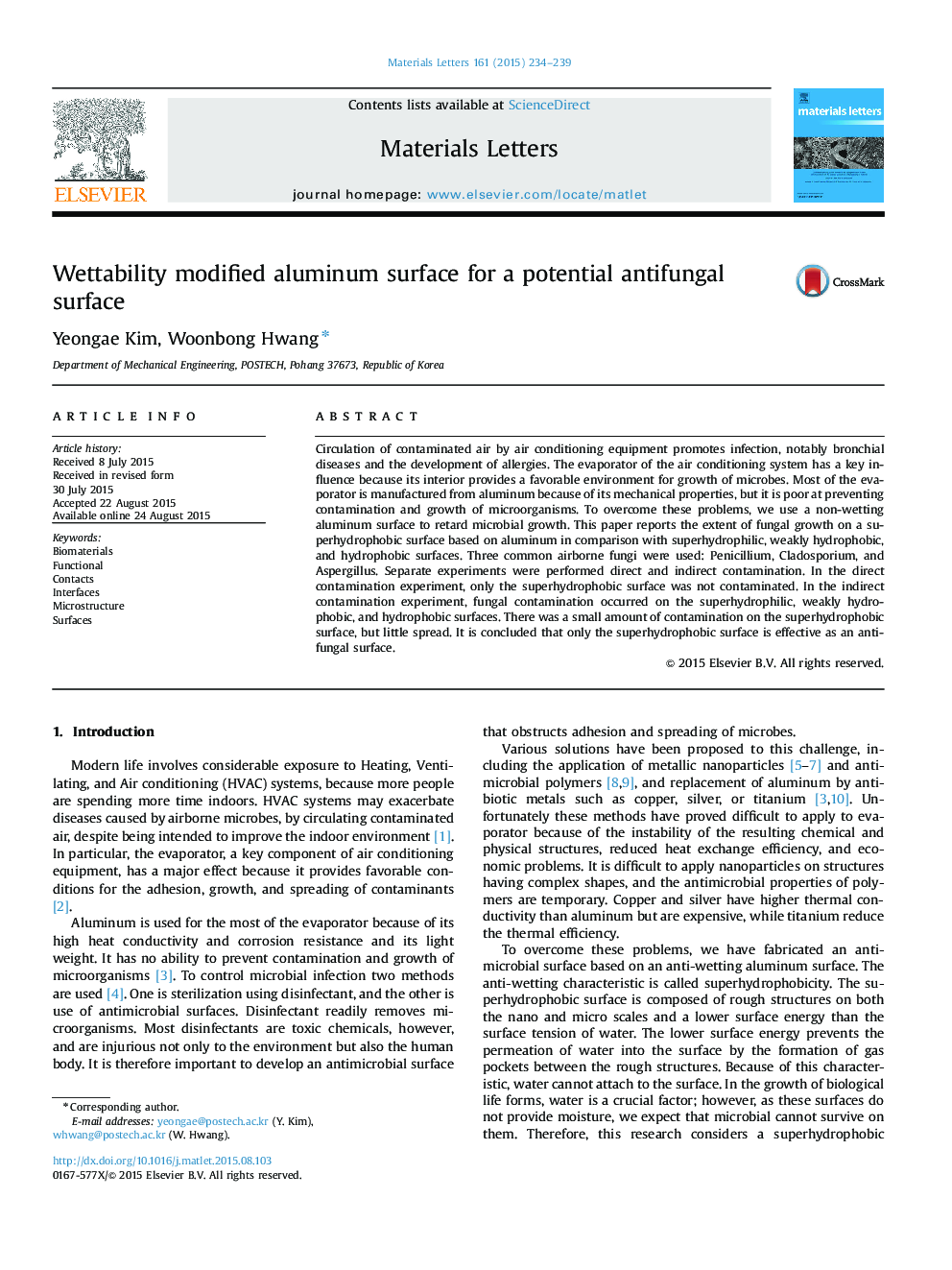| Article ID | Journal | Published Year | Pages | File Type |
|---|---|---|---|---|
| 8017879 | Materials Letters | 2015 | 6 Pages |
Abstract
Circulation of contaminated air by air conditioning equipment promotes infection, notably bronchial diseases and the development of allergies. The evaporator of the air conditioning system has a key influence because its interior provides a favorable environment for growth of microbes. Most of the evaporator is manufactured from aluminum because of its mechanical properties, but it is poor at preventing contamination and growth of microorganisms. To overcome these problems, we use a non-wetting aluminum surface to retard microbial growth. This paper reports the extent of fungal growth on a superhydrophobic surface based on aluminum in comparison with superhydrophilic, weakly hydrophobic, and hydrophobic surfaces. Three common airborne fungi were used: Penicillium, Cladosporium, and Aspergillus. Separate experiments were performed direct and indirect contamination. In the direct contamination experiment, only the superhydrophobic surface was not contaminated. In the indirect contamination experiment, fungal contamination occurred on the superhydrophilic, weakly hydrophobic, and hydrophobic surfaces. There was a small amount of contamination on the superhydrophobic surface, but little spread. It is concluded that only the superhydrophobic surface is effective as an antifungal surface.
Related Topics
Physical Sciences and Engineering
Materials Science
Nanotechnology
Authors
Yeongae Kim, Woonbong Hwang,
